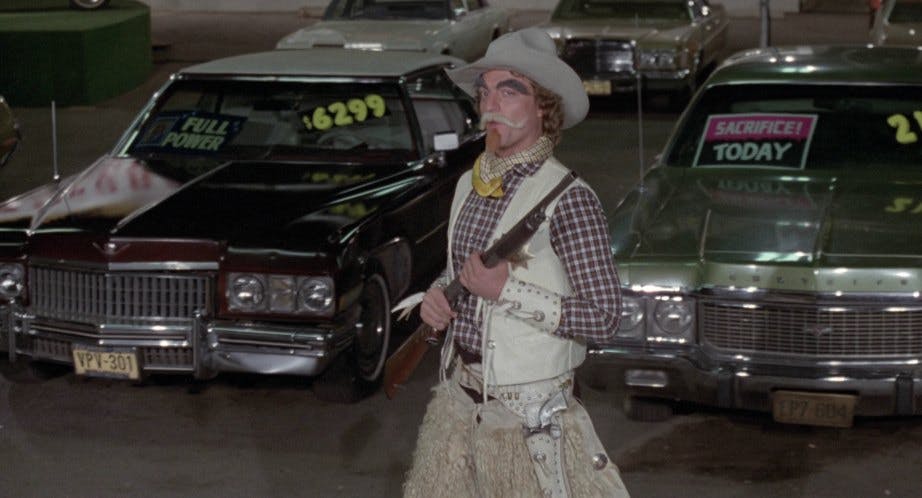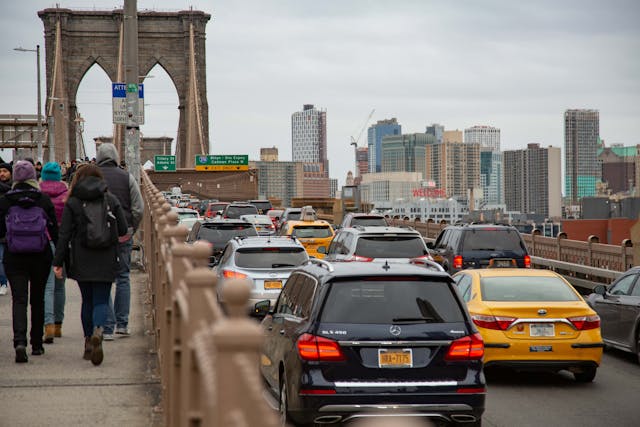Piston Slap: Putting the Brakes on Auto Start/Stop? (PART II)
The feedback from last week’s Piston Slap was clear: Not only did I get it wrong, but many folks already knew the right answer. The solution for disabling a modern car’s auto stop/start is so commonplace from the correct Google search that the answer was right under my nose.
So yes, by all means, look for an “auto start/stop eliminator” designed to be plug-and-play with your vehicle. Just be mindful that installing one could void your warranty, and be aware that you are defeating an EPA-mandated device. (Apparently it is not mandated, but see the video above for other relevant pitfalls.)
Maybe you can get away with it, or maybe not: That answer is beyond the scope of our discussion. Instead, have a look at some comments that came my way after last week’s Piston Slap—you might learn just as much as I did!
Creep Up to the Line?

Geoffrey: One “hack” we found on our Escape (not sure on other models) is to not hold the brake, but instead inch forward a couple times. That should keep it disabled.
Stay Cool

Richard: I have a 2023 Traverse High Country. I turn on the A/C set at any temperature. The car has never gone into Start/Stop mode.
Regarding Dealership Conversations …

Brian: I heard you mention calling up the representatives at Ford, Chevy, or Chrysler, and asking them to be able to disable this feature? I mean, as a mechanic for the past 20 years it sounds like a great idea, but has anybody ever actually been able to do that?
Me: I should have been clearer when making that suggestion. I’ve received straight-up good information from car dealerships about questionable mods like auto start/stop elimination. Yes, but there’s always a trick to it.
Your average service advisor (the first person you often meet) isn’t likely to help. But if you ask nicely for the Service Director (or Fixed Ops Director) you can sometimes get valid recommendations outside of what their corporate overlords recommend. These people have seen it all, and sometimes they are willing to help. Their advice becomes much more affordable when they know the vehicle in question is outside of the warranty period. (And sometimes they go out of their way for a nice person who just bought their brand of vehicle as a used car, too.)
I have been this lucky in a general sense, and that’s because they will include CYA statements to ensure such recommendations don’t come back to haunt them. It is worth a shot, even if it is one helluva long shot. But not in this case, because everyone knows to look for eliminator kits, except for yours truly.
A Problem in the Big Picture?

Dean: I have a follow-up question for you. If you use the auto-stop feature on your car, and your car auto stops and starts several times while you are running a few shopping errands (say maybe 12 times in one trip) as opposed to only two times w/o the feature, what effect does this effort have on the life of your vehicle’s starter?
Me: The effect of multiple stop-starts is supposed to be negligible, considering the quality of modern engine oils and the latest starter designs. But the odds of them being perfectly reliable after 10+ years of service have yet to be determined. (And it probably never will be analyzed, to be honest.)
There are plenty of stories on the internet about out-of-warranty vehicles needing expensive repairs when auto stop-start fails. So disabling it with a quality defeat device could be a good idea after the warranty expires.
Escaping Engine Damage?

Jason: I have a ‘17 Escape with the 1.5-liter EcoBoost engine that has start/stop which can be turned off. Most times (if not all the time) I leave my system off. The reason for that is that I have always heard that most engine wear (of a properly maintained engine) occurs on startup.
If this is true, how does start/stop not kill your engine with increased wear? Does the oil pump continue to run despite the engine being off? I assume something has to happen to at least, protect the turbo bearings. I appreciate your time!
Me: Much like my previous statement, engine wear should be negligible for at least three reasons:
- Auto stop/start is usually (only?) activated when the engine is at operating temperature, and there is generally very little wear outside of cold starting.
- Modern GF-6A oils are light years ahead of stuff we used just a few years ago.
- Even engine bearings have evolved to work with auto stop/start.
As always, your mileage may vary. Especially if you have a pre-owned vehicle with zero service history.
About Hood Latches

Don: I have disabled the start/stop feature on my 2018 Jeep Cherokee Latitude by removing the wire harness connector to the hood latch assembly. This will bring up a service message on the instrument display every time you start the vehicle but at least it disables the function.
Brendon: I have a 2018 Chevy Traverse. When I first got it there was nothing available to disable it. The Traverse doesn’t even have a button to turn it off. Recently I found a plug-in harness on Amazon. I believe it tells the computer the hood is open because it plugs into the hood latch sensor. No more start stop, no check engine lights or anything, and it was only $15.
Low Voltage Detection?

Philip: In my experience with a 2016 Cherokee, they have a module on the negative battery lead to detect low voltage and disable stop/start. If you disconnect this, the function is disabled. You do get a very small warning light on the dash, but no more stopping.
I have used this for three years now without a problem. Living in a warm tropical environment I don’t like the loss of my a/c whilst stopped. I hope this information helps, not sure what other models have the same system.
Too Bad It Won’t Default to “Off”

Mark: I know many complain about the auto-stop features, and I am glad you can at least turn it off. I wish the automakers wired it so it would be off all the time, enabling it at your own will with the push of a button.



I have it on a 2021 Suburban I recently purchased. It is noticeable but not objectionable. It has a button to turn it off but it am not bothered by it so I leave it on. The truck is also not producing emissions while the feature is active at a light. It really works very well.
On my 2018 Chev equinox I found that if you pull the shifter lever all the way back and then use the switch on the top of the shifter knob to toggle up to o sixth gear the start stop function will be defeated until the shift lever is moved say to select reverse. Then the sequence has to be repeated
Has there been research on the safety issues of stop/start? Yes, it’s supposed to be instant, but in my 2019 Jeep, there is a slight lag. When pulling out into traffic and an instant response is needed, a driver’s ability to judge “can I make it in time” is then uncertain.
This makes it an automaker liability issue. Wait until a TV ad liability lawyer argues little Susie would be alive today if the manufacturer hadn’t used a “deadly” stop/start device.
50 years ago my mother learned and was encouraged to put her school bus in neutral in stop light lines to keep the bus from moving if you let up on the brake and were not paying attention. She taught me this and I have used it ever since. It also saves a little fuel taking the small load off the trans and engine. I now have a 2022 Jeep Gladiator that has auto start stop. When I slip it into neutral at stops the engine does not stop. D to N, N to D. it’s that simple. It becomes a habit.
If you let up on the brakes while at a stop light because of inattention maybe you should reevaluate yourself rather than creating a band-aid habit.
On my Chrysler Pacifica I just unhooked the neg aux battery terminal 3 years ago. Has a warning light saying it is disabled, no other issues.
This stop-start feature is nothing new. I’ve owned my 1974 MG B since ’74, and I have stop-start. When I come to a traffic signal, sure enough the engine shuts down.
Only problem is, it doesn’t start up again. I guess it’s a stop/stop system. Saves gas.
I’m told that I’m old which is a pretty accurate description. I count days, hours and months but the second it takes to press the “A” button doesn’t ruffle my feathers. There are many things more worthy of my attention.
I have driven golf carts that have that feature. Makes sense on a golf cart, but wouldn’t want it on any of my cars. Don’t like the push button start stop either. We need a fix for that too.
I wonder if the savings from start/stop are as negligible as the savings from electric power steering are (per an industry-related article I read).
Great info here however I have a question on a different subject autmobile related of course. I have an 09 impala that has cylinder deactivation. My question is,are the devices sold to plug in the cars OBD port to defeat the cylinder deactivation Is that harmful to the engine?
In general they are not, GM Displacement on Demand defeat software has been around for years now, and has a good reputation. The quality of the person deleting it from the tune (or the quality of the tool you plug into the OBD port) is often what matters.
My 09 Impala has the active fuel management. Which I have heard, there’s been a lot of problems with
The problem with shutting off the engine is that it may choose to shut off simply when one is braking to a stop to shift into reverse. I’ve a Terrain that can have its transmission become unsettled due to the engine shutting off just as I was selecting reverse to back into a parking or fuel station spot. The car doesn’t work properly after that, unless it sits for a while.
I have this feature on my 2022 Forester. It also has a small screen in the center of the instrument panel telling me how much fuel I have saved using said feature. So far I think it’s about a gallon and a half in 30K miles…
I have a 2023 Genesis GV70 and a 2024 GV80. For a year now I’ve kept a slim piece of plastic in the 70 and a single edge razor blade in the 80 inserted beside the defeat buttons to keep them pressed in. Works like a charm! Probably will work on other Hyundais and Kias too.
As long as we’re trying to save a little fuel by shutting off the engine while the vehicle is stopped, why not also eliminate the remote start function which allows for running the engine with no one in the car?